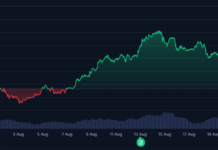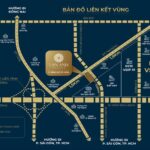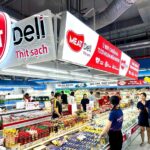On the afternoon of October 1st, Mr. Nguyen Van Duoc, Chairman of Ho Chi Minh City People’s Committee, along with a city delegation, met with Becamex Corporation to discuss the implementation plan for the railway lines proposed by the corporation.
Becamex Corporation has proposed two key railway lines, considered the “backbone” of the future transportation system: the Bau Bang – Cai Mep line and the Ho Chi Minh City – Can Tho line.
The investment in these two railway lines aims to establish a modern, green logistics network for Ho Chi Minh City, serving as a pillar for regional economic development.
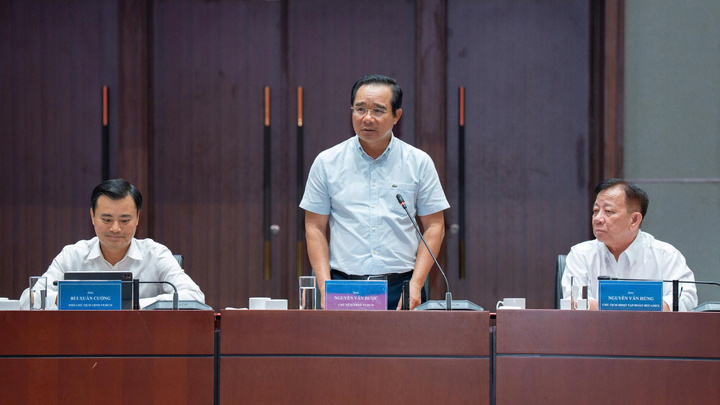
Chairman Nguyen Van Duoc urged Becamex to focus resources on studying and clarifying the scale and investment plan for the Bau Bang – An Binh – Cai Mep railway line.
Specifically, the Bau Bang – An Binh – Cai Mep line, approximately 127km long, is designed for speeds of 160 km/h for passenger trains and 120 km/h for freight trains.
With a total investment of nearly 153 trillion VND, this line will directly connect industrial zones from Binh Duong, the industrial hub, to Dong Nai with the deep-water port cluster of Cai Mep – Thi Vai. Once completed, it will significantly enhance competitiveness in maritime transport.
The Ho Chi Minh City – Can Tho railway line, approximately 174km long, has a Phase 1 investment of over 173.6 trillion VND. Designed for speeds of 200 km/h for passenger trains and 160 km/h for freight trains, it will serve as a vital link, transporting agricultural products and goods from the Mekong Delta to major industrial centers and international seaports.
Mr. Nguyen Van Hung, Chairman of the Board and CEO of Becamex Corporation, emphasized that these two railway lines will be designed for interoperability, creating a modern railway network connecting seaports, industrial zones, and major urban areas.
Upon completion, it is expected to save approximately $2.2 billion in logistics costs annually, positioning Ho Chi Minh City and the Southern region as a hub for smart, sustainable, and green transportation.
Speaking at the meeting, Chairman Nguyen Van Duoc highlighted the special significance of Becamex’s research on the two railway lines, which aligns with the development needs of the new Ho Chi Minh City.
According to Mr. Duoc, the Cai Mep – Thi Vai port (formerly in Ba Ria – Vung Tau) is planned to have a 22km-long dock, one of the longest in the world, capable of accommodating the largest global shipping lines. This is a strategic advantage not only for the region but also for Ho Chi Minh City following administrative boundary consolidation.
Currently, while cargo handling capacity is available, the infrastructure for connecting railways, particularly for freight, is lacking. The Ho Chi Minh City leadership strongly supports the corporation’s proposal, especially the Bau Bang – Cai Mep container railway line. He requested Becamex to concentrate resources on studying and clarifying the scale and investment plan for this line.
In addition to the overall planning, Mr. Duoc asked for clarification on issues such as the detailed locations of stations and the TOD development model; how cargo concentration areas are planned; investment ratios, capital mobilization methods, and Becamex’s proposals and recommendations for central and city coordination to address and support implementation.
Mr. Duoc also affirmed that Ho Chi Minh City agrees for Becamex to continue its research. According to regulations, the Bau Bang – Cai Mep railway must be reported to the Government. Therefore, Ho Chi Minh City will work with Dong Nai, a province through which the line passes, next week to unify the plan, ensuring smooth implementation, and then submit it to the Government.
According to Mr. Nguyen Van Hung, following the consolidation of Ho Chi Minh City with Binh Duong and Ba Ria – Vung Tau, the area has unlocked new development potential, leveraging the strengths of each locality. Notably, there are more opportunities to develop rail and waterway transportation, creating a more diverse connectivity network.
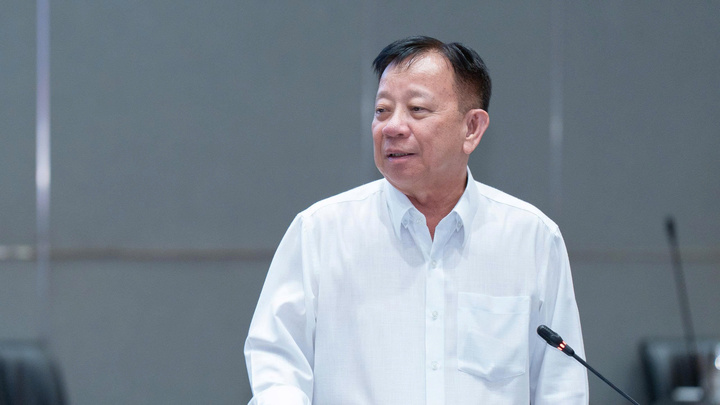
Chairman of Becamex, Nguyen Van Hung, speaks at the meeting.
Becamex, with over 90% state capital, aims to continue partnering with the state in its development journey. For major infrastructure projects, including railways, to become a reality, the city needs clear mechanisms regarding the state’s role in land clearance, with businesses handling construction and operation.
“Becamex has engaged with numerous domestic and international investors. Investors highly value and are interested in Ho Chi Minh City’s railway planning, seeking a transparent framework for participation,” said Mr. Hung.
In addition to proposing railway research, Becamex also urged Ho Chi Minh City to address challenges in several key infrastructure projects. These include the expansion of National Highway 13, the My Phuoc – Tan Van road, the expanded Bau Bang Industrial Park (380 ha), the Cay Truong Industrial Park (700 ha), and the Bau Bang 1 and 2 solar energy projects.
Mr. Tran Quang Lam, Director of Ho Chi Minh City Department of Construction, noted the urgent need for developing railway lines connecting the region, with several lines already undergoing pre-feasibility studies by the Ministry of Construction.
He advised Becamex to consider a comprehensive approach to avoid overlaps and disruptions in planning.
Unlocking Success: Overcoming Challenges in Two Major Projects
Numerous road and rail projects poised to significantly boost the economy are currently being prioritized by Ho Chi Minh City, with a focus on resolving bottlenecks and accelerating their implementation.
Deputy CEO of VinaCapital: “Industrial Real Estate Should Be Recognized as a National Asset”
“Industrial real estate should be considered a national asset, not merely a business venture,” stated Mr. Trần Thanh Thanh Hải, Deputy General Director in charge of energy and infrastructure at VinaCapital, during the Committee II’s public-private partnership discussion session on the morning of September 29th.
Duravit & Franke Partner as Exclusive Suppliers for A&T Saigon Riverside
Nestled in the vibrant heart of Ho Chi Minh City, A&T Saigon Riverside stands as a beacon of resort-style living along the Saigon River. This exceptional project is delivered with top-tier amenities from globally renowned brands such as Duravit and Franke, ensuring a lifestyle that embodies sophistication, sustainability, and unparalleled elegance.
Lan Anh Avenue: The Premier Luxury Compound Captivates at Its First Launch Event
On the morning of September 28, 2025, White Palace in Ho Chi Minh City hosted the highly successful first sales launch of Lan Anh Avenue, an exclusive compound designed for professionals. The event drew a large crowd of experts, clients, and investors, underscoring the project’s strong appeal, strategically located adjacent to the Lego headquarters and VSIP III Industrial Park.

























